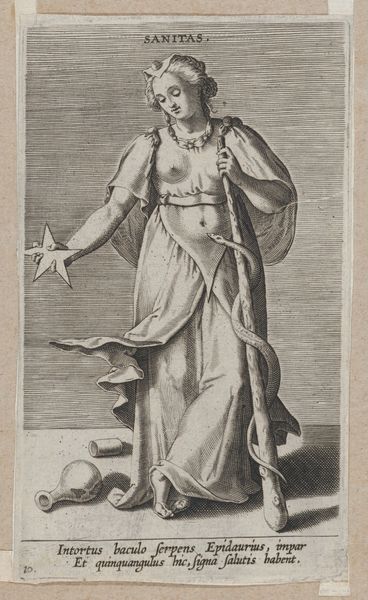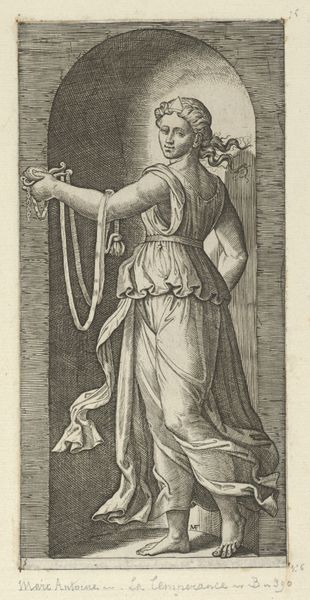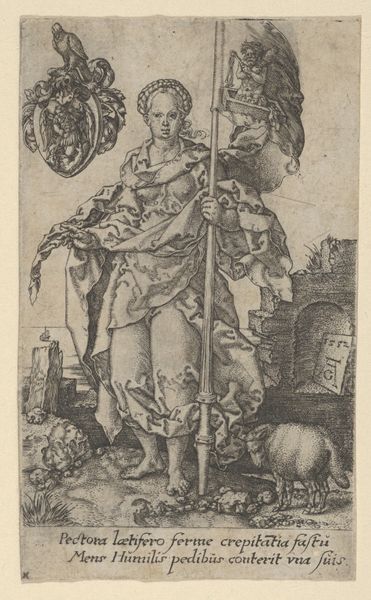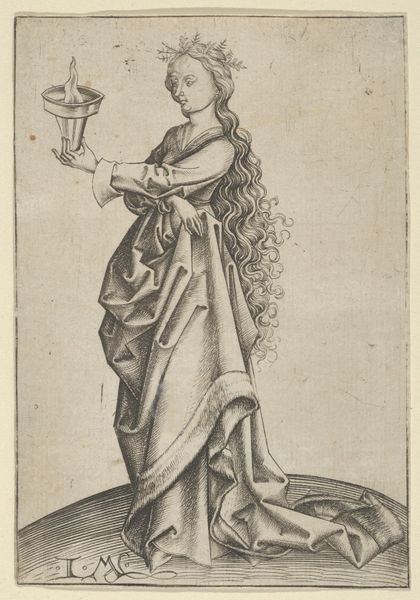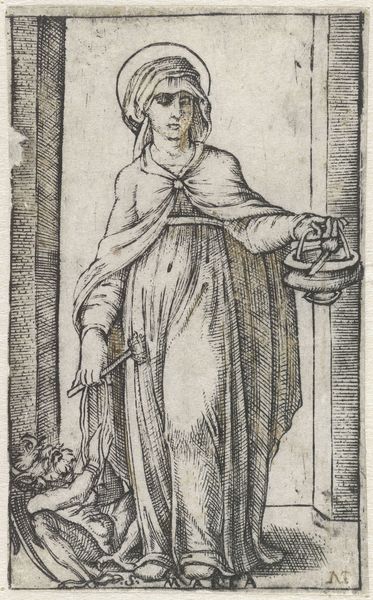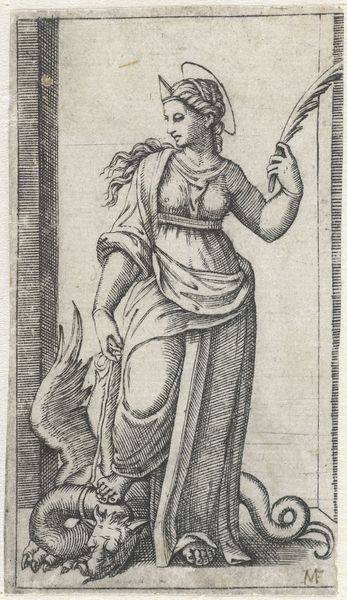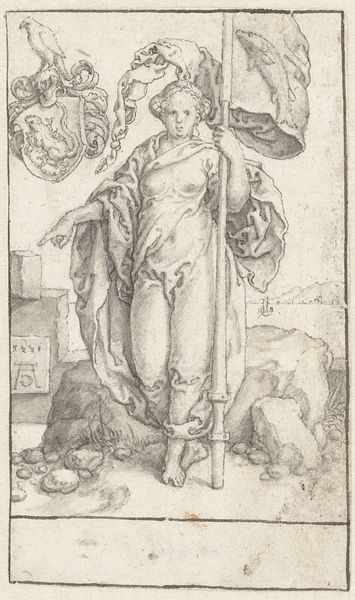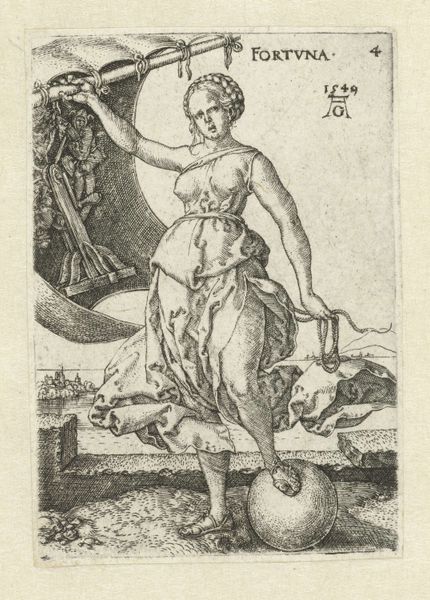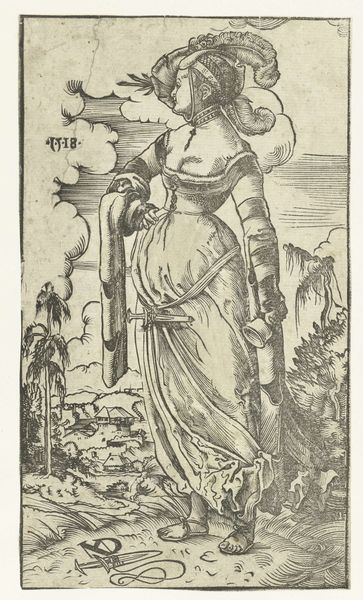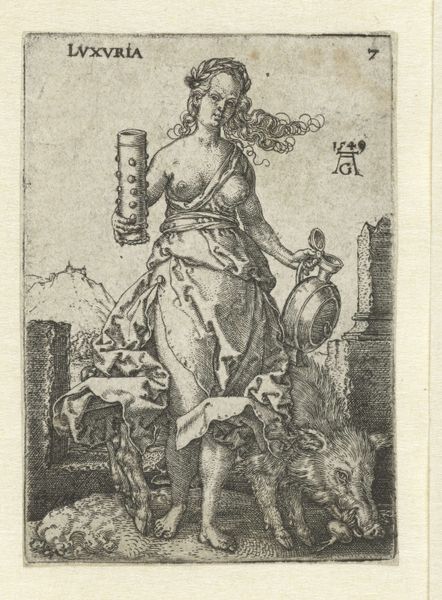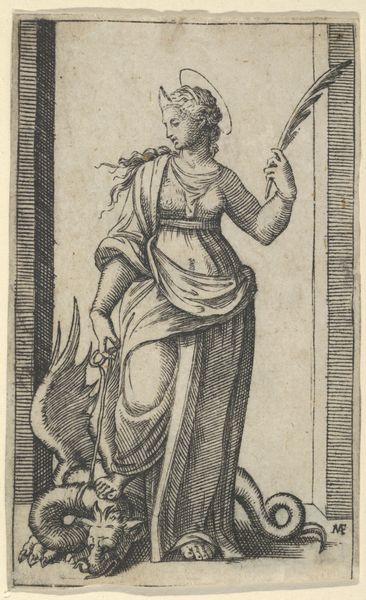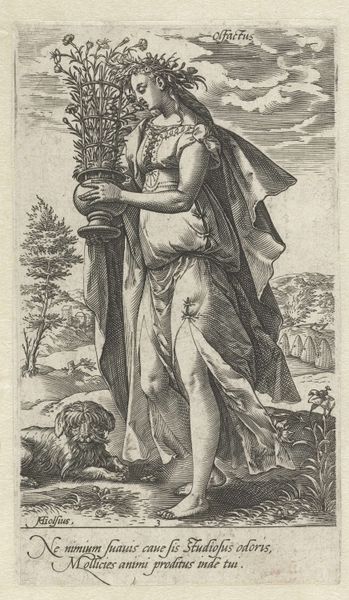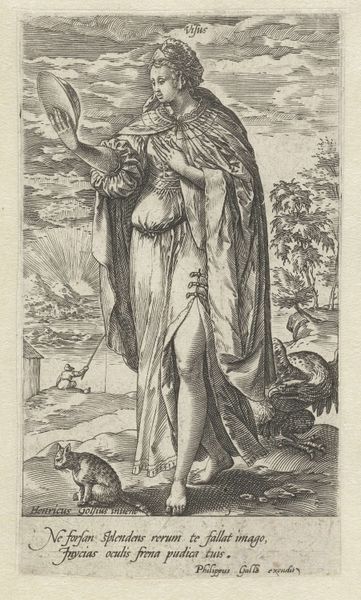
print, engraving
#
allegory
# print
#
landscape
#
figuration
#
history-painting
#
northern-renaissance
#
engraving
Dimensions: sheet (trimmed to plate mark): 4.4 × 3.2 cm (1 3/4 × 1 1/4 in.)
Copyright: National Gallery of Art: CC0 1.0
Editor: This engraving, "Moon," created in 1569 by Abraham de Bruyn, features Luna with a ship and what looks like a large lobster. The detail achieved through the engraving process is striking. What particularly intrigues me is the combination of allegorical figure, seascape, and everyday marine life. How do you see the convergence of those subjects in this piece? Curator: For me, the allure lies in the method of production, which in turn informs our understanding of the work. This engraving reflects the labor and resources necessary for both creation and dissemination. It questions what materials were used and why. Editor: Could you expand on that a little bit? Curator: Certainly. The engraving process itself — the labor involved in carving the image into a metal plate — allowed for mass production and distribution of images. It makes me consider access and class in a broader perspective. Further, consider the paper itself: its source and what trade routes affected it. This process democratized images, challenging the elite control over art we associate with paintings or sculptures. How does considering its means of production shift your perspective? Editor: That makes me think about how printed images like these were consumed by the merchant class in port cities like Antwerp. So this work gives insight into trade as much as classical allegory. The lobster is literally grounded while the moon and ship sail freely, connecting it with mercantile pursuits. I suppose this print can function as evidence of a social structure of consumption, where new kinds of printed allegories helped make sense of the new social dynamics. Curator: Precisely. Seeing this as a commodity helps contextualize its function beyond mere artistic expression. Editor: That connection between art and its means of production offers such a richer understanding. Thanks so much. Curator: Likewise. Considering the labor and material reality of art always yields rewarding insights.
Comments
No comments
Be the first to comment and join the conversation on the ultimate creative platform.
